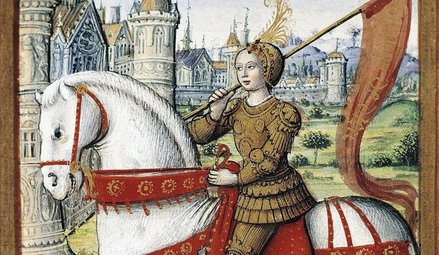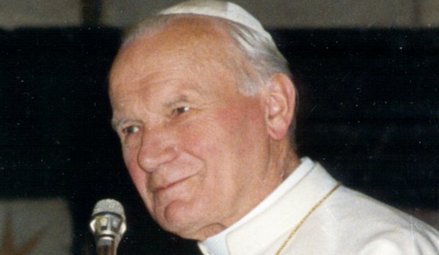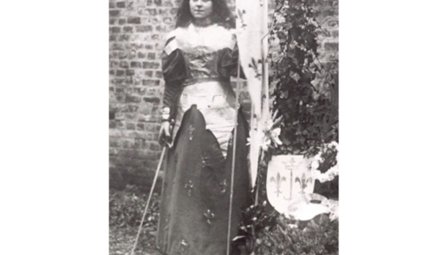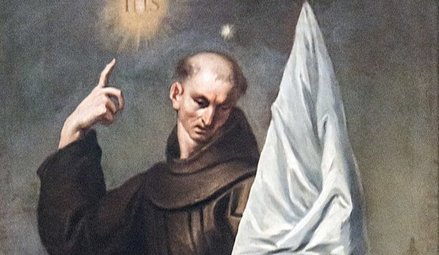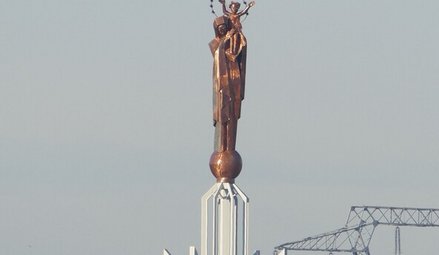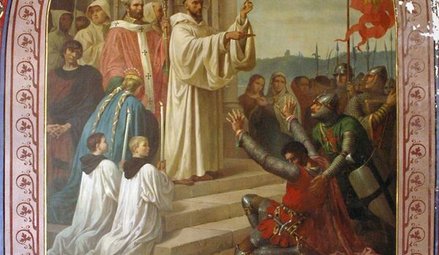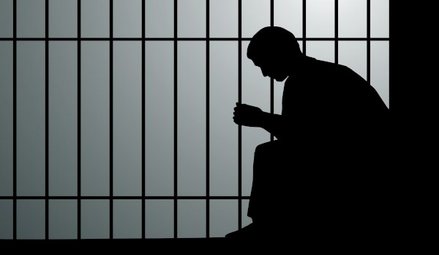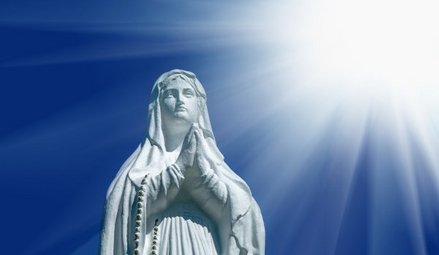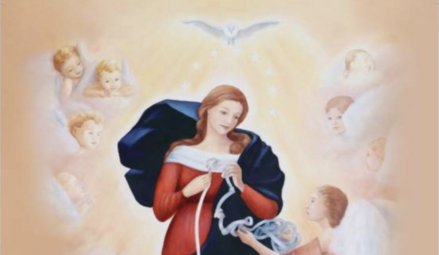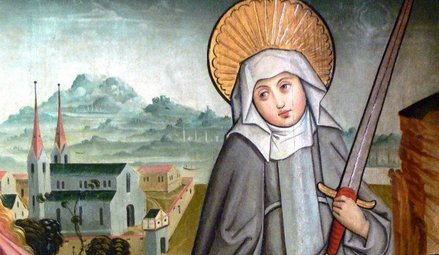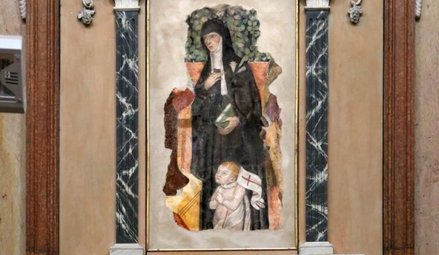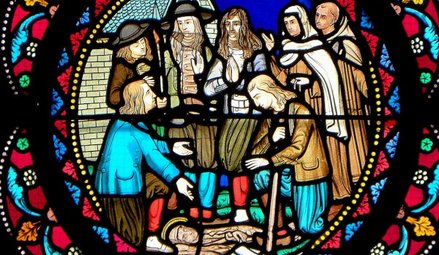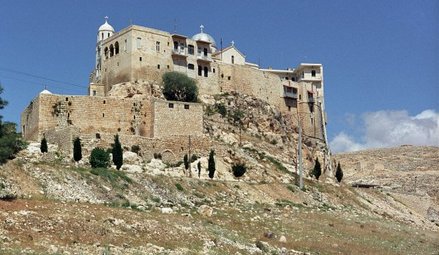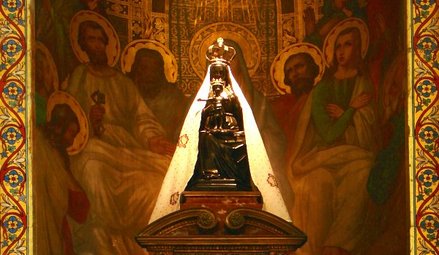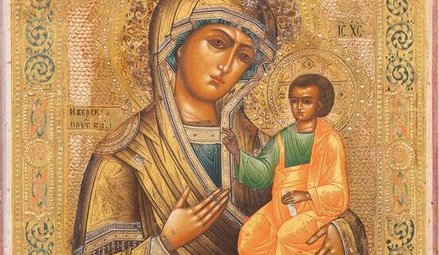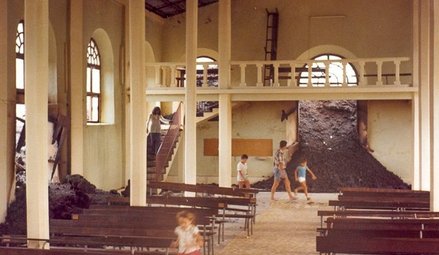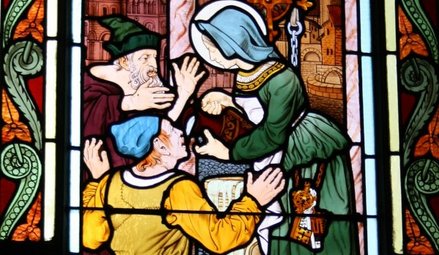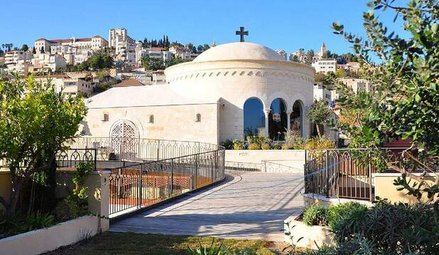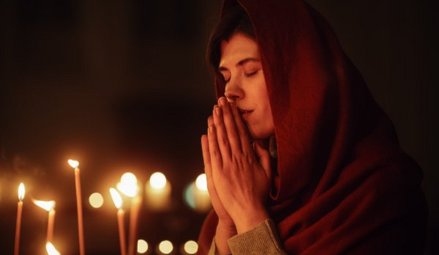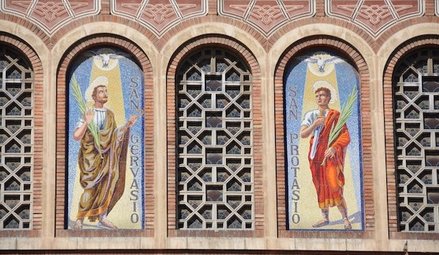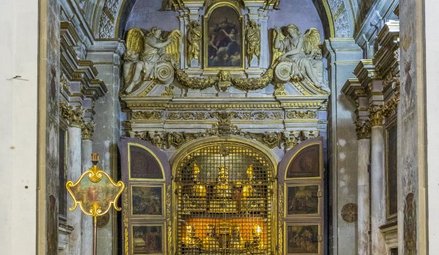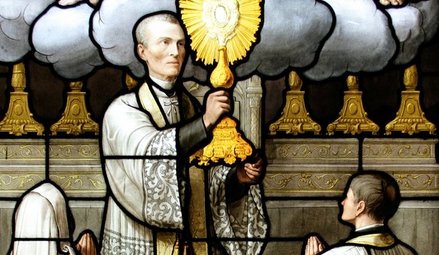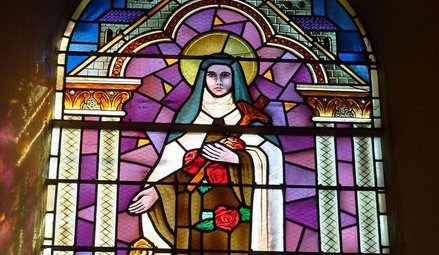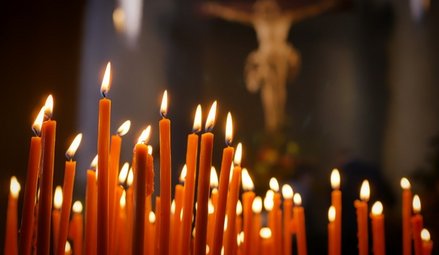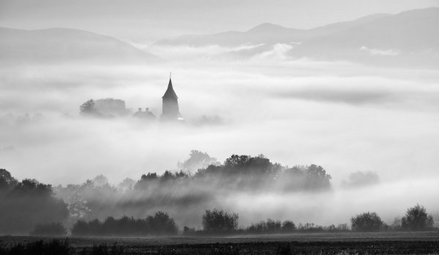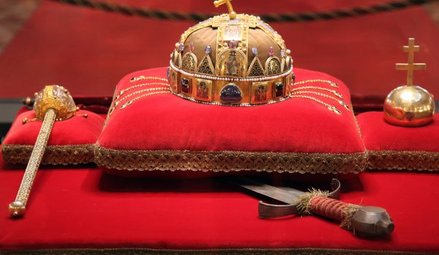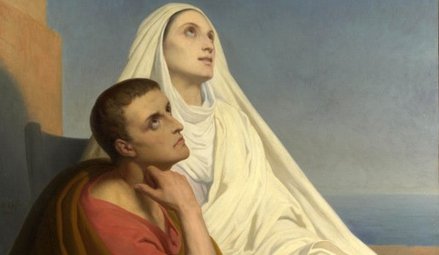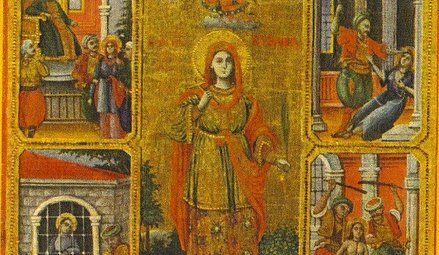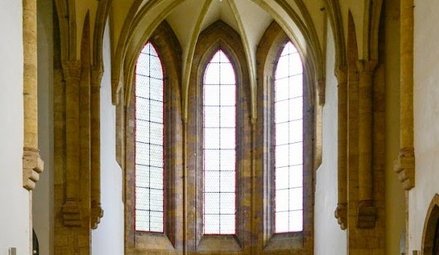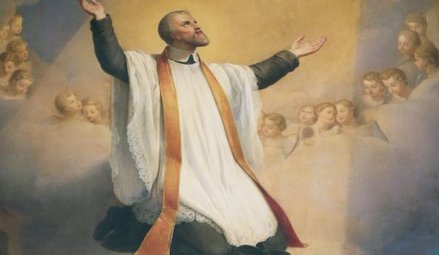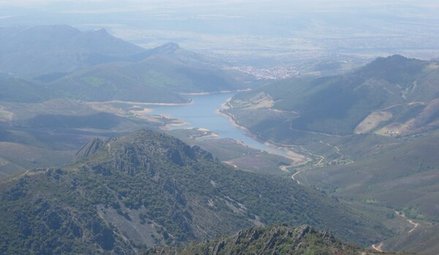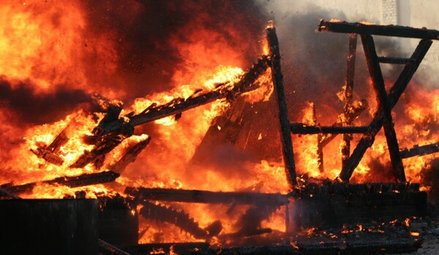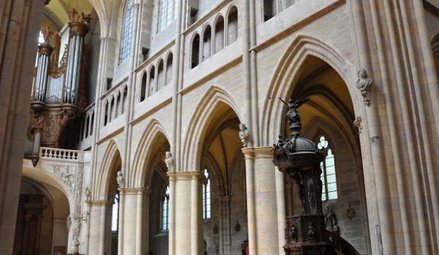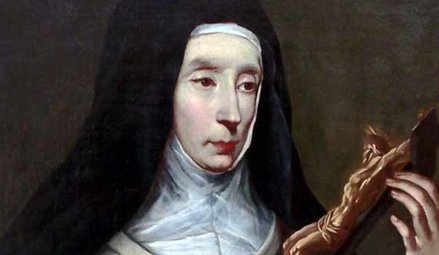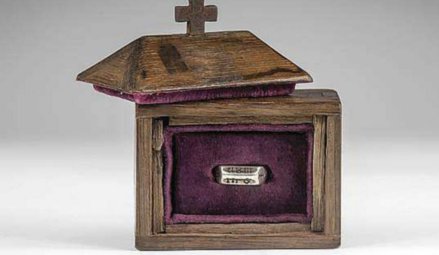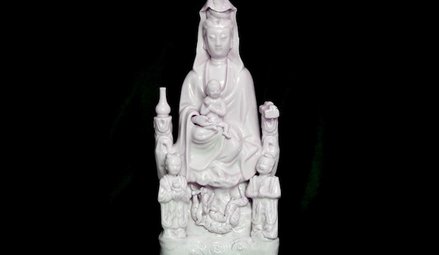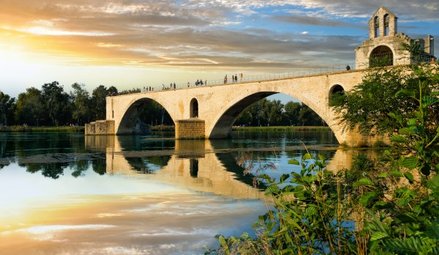- By theme
- Jesus
- The many proofs of Christ’s resurrection
- Saint Thomas Aquinas: God gave all the divine proofs we needed to believe
- The surpassing power of Christ's word
- Lewis’s trilemma: a proof of Jesus’s divinity
- God saves: the power of the holy name of Jesus
- Jesus spoke and acted as God's equal
- Jesus' divinity is actually implied in the Koran
- Jesus came at the perfect time of history
- Rabbinical sources testify to Jesus' miracles
- Mary
- The Church
- The Bible
- An enduring prophecy and a series of miraculous events preventing the reconstruction of the Temple
- The authors of the Gospels were either eyewitnesses or close contacts of those eyewitnesses
- Onomastics support the historical reliability of the Gospels
- The New Testament was not altered
- The New Testament is the best-attested manuscript of Antiquity
- The Gospels were written too early after the facts to be legends
- Archaeological finds confirm the reliability of the New Testament
- The criterion of embarrassment proves that the Gospels tell the truth
- The dissimilarity criterion strengthens the case for the historical reliability of the Gospels
- 84 details in Acts verified by historical and archaeological sources
- The unique prophecies that announced the Messiah
- The time of the coming of the Messiah was accurately prophesied
- The prophet Isaiah's ultra accurate description of the Messiah's sufferings
- Daniel's "Son of Man" is a portrait of Christ
- The Apostles
- Saint Peter, prince of the apostles
- Saint John the Apostle: an Evangelist and Theologian who deserves to be better known (d. 100)
- Saint Matthew, apostle, evangelist and martyr (d. 61)
- James the Just, “brother” of the Lord, apostle and martyr (d. 62 AD)
- Saint Matthias replaces Judas as an apostle (d. 63)
- The martyrs
- The protomartyr Saint Stephen (d. 31)
- Polycarp, bishop of Smyrna, disciple of John and martyr (d. 155)
- Saint Blandina and the Martyrs of Lyon: the fortitude of faith (177 AD)
- Saint Agatha stops a volcano from destroying the city of Catania (d. 251)
- Saint Lucy of Syracuse, virgin and martyr for Christ (d. 304)
- Thomas More: “The king’s good servant, but God’s first”
- The martyrdom of Paul Miki and his companions (d. 1597)
- The martyrs of Angers and Avrillé (1794)
- The Martyrs of Compiègne (1794)
- The Vietnamese martyrs Father Andrew Dung-Lac and his 116 companions (17th-19th centuries)
- He braved torture to atone for his apostasy (d. 1818)
- Blaise Marmoiton: the epic journey of a missionary to New Caledonia (d. 1847)
- José Luis Sanchez del Rio, martyred at age 14 for Christ the King (d. 1928)
- Saint Maximilian Kolbe, Knight of the Immaculate (d. 1941)
- The monks
- The Desert Fathers (3rd century)
- Saint Anthony of the Desert, a father of monasticism (d. 356)
- Saint Benedict, father of Western monasticism (d. 550)
- Saint Bruno the Carthusian (d.1101): the miracle of a hidden life
- Blessed Angelo Agostini Mazzinghi: the Carmelite with flowers pouring from his mouth (d. 1438)
- Monk Abel of Valaam's accurate prophecies about Russia (d. 1841)
- The more than 33,000 miracles of Saint Charbel Maklouf (d. 1898)
- Saint Pio of Pietrelcina (d. 1968): How God worked wonders through "a poor brother who prays"
- The surprising death of Father Emmanuel de Floris (d. 1992)
- The prophecies of Saint Paisios of Mount Athos (d. 1994)
- The saints
- Saints Anne and Joachim, parents of the Virgin Mary (19 BC)
- Saint Nazarius, apostle and martyr (d. 68 or 70)
- Ignatius of Antioch: successor of the apostles and witness to the Gospel (d. 117)
- Saint Gregory the Miracle-Worker (d. 270)
- Saint Martin of Tours: patron saint of France, father of monasticism in Gaul, and the first great leader of Western monasticism (d. 397)
- Saint Lupus, the bishop who saved his city from the Huns (d. 623)
- Saint Dominic of Guzman (d.1221): an athlete of the faith
- Saint Francis, the poor man of Assisi (d. 1226)
- Saint Anthony of Padua: "everyone’s saint"
- Saint Rose of Viterbo or How prayer can transform the world (d. 1252)
- Saint Simon Stock receives the scapular of Mount Carmel from the hands of the Virgin Mary
- The unusual boat of Saint Basil of Ryazan
- Saint Agnes of Montepulciano's complete God-confidence (d. 1317)
- The extraordinary conversion of Michelina of Pesaro
- Saint Peter Thomas (d. 1366): a steadfast trust in the Virgin Mary
- Saint Rita of Cascia: hoping against all hope
- Saint Catherine of Genoa and the Fire of God's love (d. 1510)
- Saint Anthony Mary Zaccaria, physician of bodies and souls (d. 1539)
- Saint Ignatius of Loyola (d. 1556): "For the greater glory of God"
- Brother Alphonsus Rodríguez, SJ: the "holy porter" (d. 1617)
- Martin de Porres returns to speed up his beatification (d. 1639)
- Virginia Centurione Bracelli: When God is the only goal, all difficulties are overcome (d.1651)
- Saint Marie of the Incarnation, "the Teresa of New France" (d.1672)
- St. Francis di Girolamo's gift of reading hearts and souls (d. 1716)
- Rosa Venerini: moving in the ocean of the Will of God (d. 1728)
- Seraphim of Sarov (1759-1833): the purpose of the Christian life is to acquire the Holy Spirit
- Camille de Soyécourt, filled with divine fortitude (d. 1849)
- Bernadette Soubirous, the shepherdess who saw the Virgin Mary (1858)
- Saint John Vianney (d. 1859): the global fame of a humble village priest
- Gabriel of Our Lady of Sorrows, the "Gardener of the Blessed Virgin" (d. 1862)
- Father Gerin, the holy priest of Grenoble (1863)
- Blessed Francisco Palau y Quer: a lover of the Church (d. 1872)
- Saints Louis and Zelie Martin, the parents of Saint Therese of Lisieux (d. 1894 and 1877)
- The supernatural maturity of Francisco Marto, “contemplative consoler of God” (d. 1919)
- Saint Faustina, apostle of the Divine Mercy (d. 1938)
- Brother Marcel Van (d.19659): a "star has risen in the East"
- Doctors
- The mystics
- Lutgardis of Tongeren and the devotion to the Sacred Heart
- Saint Angela of Foligno (d. 1309) and "Lady Poverty"
- Saint John of the Cross: mystic, reformer, poet, and universal psychologist (+1591)
- Blessed Anne of Jesus: a Carmelite nun with mystical gifts (d.1621)
- Catherine Daniélou: a mystical bride of Christ in Brittany
- Saint Margaret Mary sees the "Heart that so loved mankind"
- Mother Yvonne-Aimée of Jesus' predictions concerning the Second World War (1922)
- Sister Josefa Menendez, apostle of divine mercy (d. 1923)
- Edith Royer (d. 1924) and the Sacred Heart Basilica of Montmartre
- Rozalia Celak, a mystic with a very special mission (d. 1944)
- Visionaries
- Saint Perpetua delivers her brother from Purgatory (203)
- María de Jesús de Ágreda, abbess and friend of the King of Spain
- Discovery of the Virgin Mary's house in Ephesus (1891)
- Sister Benigna Consolata: the "Little Secretary of Merciful Love" (d. 1916)
- Maria Valtorta's visions match data from the Israel Meteorological Service (1943)
- Berthe Petit's prophecies about the two world wars (d. 1943)
- Maria Valtorta saw only one pyramid at Giza in her visions... and she was right! (1944)
- The 700 extraordinary visions of the Gospel received by Maria Valtorta (d. 1961)
- The amazing geological accuracy of Maria Valtorta's writings (d. 1961)
- Maria Valtorta's astronomic observations consistent with her dating system
- Discovery of an ancient princely house in Jerusalem, previously revealed to a mystic (d. 1961)
- The popes
- The great witnesses of the faith
- Saint Augustine's conversion: "Why not this very hour make an end to my uncleanness?" (386)
- Thomas Cajetan (d. 1534): a life in service of the truth
- Madame Acarie, "the servant of the servants of God" (d. 1618)
- Blaise Pascal (d.1662): Biblical prophecies are evidence
- Madame Élisabeth and the sweet smell of virtue (d. 1794)
- Jacinta, 10, offers her suffering to save souls from hell (d. 1920)
- Father Jean-Édouard Lamy: "another Curé of Ars" (d. 1931)
- Christian civilisation
- The depth of Christian spirituality
- John of the Cross' Path to perfect union with God based on his own experience
- The dogma of the Trinity: an increasingly better understood truth
- The incoherent arguments against Christianity
- The "New Pentecost": modern day, spectacular outpouring of the Holy Spirit
- The Christian faith explains the diversity of religions
- Cardinal Pierre de Bérulle (d.1629) on the mystery of the Incarnation
- Christ's interventions in history
- Marian apparitions and interventions
- The Life-giving Font of Constantinople
- Our Lady of Virtues saves the city of Rennes in Bretagne (1357)
- Mary stops the plague epidemic at Mount Berico (1426)
- Our Lady of Miracles heals a paralytic in Saronno (1460)
- Cotignac: the first apparitions of the Modern Era (1519)
- Savona: supernatural origin of the devotion to Our Lady of Mercy (1536)
- The Virgin Mary delivers besieged Christians in Cusco, Peru
- The victory of Lepanto and the feast of Our Lady of the Rosary (1571)
- The apparitions to Brother Fiacre (1637)
- The “aldermen's vow”, or the Marian devotion of the people of Lyon (1643)
- Our Lady of Nazareth in Plancoët, Brittany (1644)
- Our Lady of Laghet (1652)
- Saint Joseph’s apparitions in Cotignac, France (1660)
- Heaven confides in a shepherdess of Le Laus (1664-1718)
- Zeitoun, a two-year miracle (1968-1970)
- The Holy Name of Mary and the major victory of Vienna (1683)
- Heaven and earth meet in Colombia: the Las Lajas shrine (1754)
- The five Marian apparitions that traced an "M" over France, and its new pilgrimage route
- A series of Marian apparitions and prophetic messages in Ukraine since the 19th century (1806)
- "Consecrate your parish to the Immaculate Heart of Mary" (1836)
- At La Salette, Mary wept in front of the shepherds (1846)
- Our Lady of Champion, Wisconsin: the first and only approved apparition of Mary in the US (1859)
- Gietrzwald apparitions: heavenly help to a persecuted minority
- The silent apparition of Knock Mhuire in Ireland (1879)
- Mary "Abandoned Mother" appears in a working-class district of Lyon, France (1882)
- The thirty-three apparitions of the Virgin Mary in Beauraing (1932)
- "Our Lady of the Poor" appears eight times in Banneux (1933)
- Fontanelle-Montichiari apparitions of Our Lady "Rosa Mystica" (1947)
- Mary responds to the Vows of the Polish Nation (1956)
- Zeitoun apparitions
- The Virgin Mary comes to France's rescue by appearing at L'Ile Bouchard (1947)
- Maria Esperanza Bianchini and Mary, Mary, Reconciler of Peoples and Nations (1976)
- Luz Amparo and the El Escorial apparitions
- The extraordinary apparitions of Medjugorje and their worldwide impact
- The Virgin Mary prophesied the 1994 Rwandan genocide (1981)
- Our Lady of Soufanieh's apparition and messages to Myrna Nazzour (1982)
- The Virgin Mary heals a teenager, then appears to him dozens of times (1986)
- Seuca, Romania: apparitions and pleas of the Virgin Mary, "Queen of Light" (1995)
- Angels and their manifestations
- Mont Saint-Michel: Heaven watching over France
- Angels give a supernatural belt to the chaste Thomas Aquinas (1243)
- The constant presence of demons and angels in the life of St Frances of Rome (d. 1440)
- Mother Yvonne-Aimée escapes from prison with the help of an angel (1943)
- Saved by Angels: The Miracle on Highway 6 (2008)
- Exorcisms in the name of Christ
- A wave of charity unique in the world
- Saint Peter Nolasco: a life dedicated to ransoming enslaved Christians (d. 1245)
- Saint Angela Merici: Christ came to serve, not to be served (d. 1540)
- Saint John of God: a life dedicated to the care of the poor, sick and those with mental disorders (d. 1550)
- Saint Camillus de Lellis, reformer of hospital care (c. 1560)
- Blessed Alix Le Clerc, encouraged by the Virgin Mary to found schools (d. 1622)
- Saint Vincent de Paul (d. 1660), apostle of charity
- Marguerite Bourgeoys, Montreal's first teacher (d. 1700)
- Frédéric Ozanam, inventor of the Church's social doctrine (d. 1853)
- Damian of Molokai: a leper for Christ (d. 1889)
- Pier Giorgio Frassati (d.1925): heroic charity
- Saint Dulce of the Poor, the Good Angel of Bahia (d. 1992)
- Mother Teresa of Calcutta (d. 1997): an unshakeable faith
- Heidi Baker: Bringing God's love to the poor and forgotten of the world
- Amazing miracles
- The miracle of liquefaction of the blood of St. Januarius (d. 431)
- The miracles of Saint Anthony of Padua (d. 1231)
- Saint Pius V and the miracle of the Crucifix (1565)
- Saint Philip Neri calls a teenager back to life (1583)
- The resurrection of Jérôme Genin (1623)
- Saint Francis de Sales brings back to life a victim of drowning (1623)
- Saint John Bosco and the promise kept beyond the grave (1839)
- The day the sun danced at Fatima (1917)
- Pius XII and the miracle of the sun at the Vatican (1950)
- When Blessed Charles de Foucauld saved a young carpenter named Charle (2016)
- Reinhard Bonnke: 89 million conversions (d. 2019)
- Miraculous cures
- The royal touch: the divine thaumaturgic gift granted to French and English monarchs (11th-19th centuries)
- With 7,500 cases of unexplained cures, Lourdes is unique in the world (1858-today)
- Our Lady at Pellevoisin: "I am all merciful" (1876)
- Mariam, the "little thing of Jesus": a saint from East to West (d.1878)
- Gemma Galgani: healed to atone for sinners' faults (d. 1903)
- The miraculous cure of Blessed Maria Giuseppina Catanea
- The extraordinary healing of Alice Benlian in the Church of the Holy Cross in Damascus (1983)
- The approved miracle for the canonization of Juan Diego Cuauhtlatoatzin (1990)
- Healed by St Charbel Makhlouf, her scars bleed each month for the benefit of unbelievers (1993)
- The miracle that led to Brother André's canonisation (1999)
- Bruce Van Natta's intestinal regrowth: an irrefutable miracle (2007)
- He had “zero” chance of living: a baby's miraculous recovery (2015)
- Manouchak, operated on by Saint Charbel (2016)
- How Maya was cured from cancer at Saint Charbel's tomb (2018)
- Preserved bodies of the saints
- Dying in the odour of sanctity
- The body of Saint Cecilia found incorrupt (d. 230)
- Stanislaus Kostka's burning love for God (d. 1568)
- Blessed Antonio Franco, bishop and defender of the poor (d. 1626)
- The incorrupt body of Marie-Louise Nerbollier, the visionary from Diémoz (d. 1910)
- The great exhumation of Saint Charbel (1950)
- Bilocations
- Inedias
- Levitations
- Lacrimations and miraculous images
- Saint Juan Diego's tilma (1531)
- The Rue du Bac apparitions of the Virgin Mary to St. Catherine Labouré (Paris, 1830)
- Mary weeps in Syracuse (1953)
- Teresa Musco (d.1976): salvation through the Cross
- Soufanieh: A flow of oil from an image of the Virgin Mary, and oozing of oil from the face and hands of Myrna Nazzour (1982)
- The Saidnaya icon exudes a wonderful fragrance (1988)
- Our Lady weeps in a bishop's hands (1995)
- Stigmates
- The venerable Lukarda of Oberweimar shares her spiritual riches with her convent (d. 1309)
- Florida Cevoli: a heart engraved with the cross (d. 1767)
- Blessed Maria Grazia Tarallo, mystic and stigmatist (d. 1912)
- Saint Padre Pio: crucified by Love (1918)
- Elena Aiello: "a Eucharistic soul"
- A Holy Triduum with a Syrian mystic, witnessing the sufferings of Christ (1987)
- A Holy Thursday in Soufanieh (2004)
- Eucharistic miracles
- Lanciano: the first and possibly the greatest Eucharistic miracle (750)
- A host came to her: 11-year-old Imelda received Communion and died in ecstasy (1333)
- Faverney's hosts miraculously saved from fire
- A tsunami recedes before the Blessed Sacrament (1906)
- Buenos Aires miraculous host sent to forensic lab, found to be heart muscle (1996)
- Relics
- The Veil of Veronica, known as the Manoppello Image
- For centuries, the Shroud of Turin was the only negative image in the world
- The Holy Tunic of Argenteuil's fascinating history
- Saint Louis (d. 1270) and the relics of the Passion
- The miraculous rescue of the Shroud of Turin (1997)
- A comparative study of the blood present in Christ's relics
- Jews discover the Messiah
- Francis Xavier Samson Libermann, Jewish convert to Catholicism (1824)
- Our Lady of the Miraculous Medal and the conversion of Alphonse Ratisbonne (1842)
- Max Jacob: a liberal gay Jewish artist converts to Catholicism (1909)
- Edith Stein - Saint Benedicta of the Cross: "A daughter of Israel who, during the Nazi persecutions, remained united with faith and love to the Crucified Lord, Jesus Christ, as a Catholic, and to her people as a Jew"
- Patrick Elcabache: a Jew discovers the Messiah after his mother is miraculously cured in the name of Jesus
- Cardinal Aron Jean-Marie Lustiger (d. 2007): Chosen by God
- Muslim conversions
- Buddhist conversions
- Atheist conversions
- The conversion of an executioner during the Terror (1830)
- God woos a poet's heart: the story of Paul Claudel's conversion (1886)
- Dazzled by God: Madeleine Delbrêl's story (1924)
- C.S. Lewis, the reluctant convert (1931)
- The day André Frossard met Christ in Paris (1935)
- MC Solaar's rapper converts after experiencing Jesus' pains on the cross
- Father Sébastien Brière, converted at Medjugorje (2003)
- Franca Sozzani, the "Pope of fashion" who wanted to meet the Pope (2016)
- Nelly Gillant: from Reiki Master to Disciple of Christ (2018)
- Testimonies of encounters with Christ
- Near-death experiences (NDEs) confirm Catholic doctrine on the Four Last Things
- The NDE of Saint Christina the Astonishing, a source of conversion to Christ (1170)
- Jesus audibly calls Alphonsus Liguori to follow him (1723)
- Blessed Dina Bélanger (d. 1929): loving God and letting Jesus and Mary do their job
- Gabrielle Bossis: He and I
- André Levet's conversion in prison
- Journey between heaven and hell: a "near-death experience" (1971)
- Alicja Lenczewska: conversations with Jesus (1985)
- Vassula Ryden and the "True Life in God" (1985)
- Nahed Mahmoud Metwalli: from persecutor to persecuted (1987)
- The Bible verse that converted a young Algerian named Elie (2000)
- Invited to the celestial court: the story of Chantal (2017)
- Providential stories
- The superhuman intuition of Saint Pachomius the Great
- Germanus of Auxerre's prophecy about Saint Genevieve's future mission, and protection of the young woman (446)
- Seven golden stars reveal the future location of the Grande Chartreuse Monastery (1132)
- The supernatural reconciliation of the Duke of Aquitaine (1134)
- Saint Zita and the miracle of the cloak (13th c.)
- Joan of Arc: "the most beautiful story in the world"
- John of Capistrano saves the Church and Europe (1456)
- A celestial music comforts Elisabetta Picenardi on her deathbed (d. 1468)
- Gury of Kazan: freed from his prison by a "great light" (1520)
- The strange adventure of Yves Nicolazic (1623)
- Julien Maunoir miraculously learns Breton (1626)
- Pierre de Keriolet: with Mary, one cannot be lost (1636)
- How Korea evangelized itself (18th century)
- A hundred years before it happened, Saint Andrew Bobola predicted that Poland would be back on the map (1819)
- The prophetic poem about John Paul II (1840)
- Don Bosco's angel dog: Grigio (1854)
- Thérèse of Lisieux saved countless soldiers during the Great War
- Lost for over a century, a Russian icon reappears (1930)
- In 1947, a rosary crusade liberated Austria from the Soviets (1946-1955)
- The discovery of the tomb of Saint Peter in Rome (1949)
- He should have died of hypothermia in Soviet jails (1972)
- God protects a secret agent (1975)
- Flowing lava stops at church doors (1977)
- A protective hand saved John Paul II and led to happy consequences (1981)
- Mary Undoer of Knots: Pope Francis' gift to the world (1986)
- Edmond Fricoteaux's providential discovery of the statue of Our Lady of France (1988)
- The Virgin Mary frees a Vietnamese bishop from prison (1988)
- The miracles of Saint Juliana of Nicomedia (1994)
- Global launch of "Pilgrim Virgins" was made possible by God's Providence (1996)
- The providential finding of the Mary of Nazareth International Center's future site (2000)
- Syrian Monastery shielded from danger multiple times (2011-2020)
- Jesus
- Who are we?
- Make a donation
TOUTES LES RAISONS DE CROIRE
Histoires providentielles
n°269
Pluneret (Brittany, France)
1623-1625
The strange adventure of Yves Nicolazic
Born in 1591 in Pluneret, Brittany (France), Yves Nicolazic was a well-to-do Breton peasant. From August 1623, Saint Anne appeared to him several times. She asked him to rebuild a chapel that had once been dedicated to her. Over the next two years, Nicolazic received numerous signs, apparitions and miracles. On the night of 7 to 8 March 1625, a mysterious candle led Yves and his neighbours to the exact spot where the chapel was to be built, in the Bocenno field. As they dug, they found a very old statue of a woman. These events led to the building of the most famous shrine and pilgrimage site dedicated to Saint Anne, mother of Mary and grandmother of Jesus: the basilica of Sainte-Anne d'Auray.
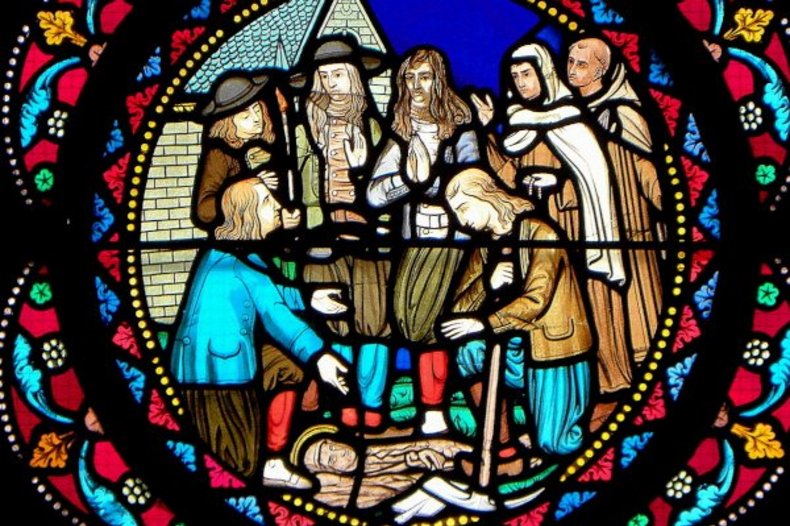
Discovery of the statue of Saint Anne by Yvon Nicolazic, stained glass window in the Carmes chapel in Rennes / © CC BY-SA 4.0, GO69.
Les raisons d'y croire :
Respected by his neighbours and the local prominent citizens, Yves Nicolazic was known for his deep piety, his devotion to Mary and his charity towards the poor, which led the prior of the Carmelite convent in Auray to say: "Yves was so loyal that he would have preferred to suffer the loss of all his property than to harm anyone." Something rare at the time, he was allowed to receive communion every Sunday and public holiday. No one could think that this man of "probity to the point of scruples" was a hypocrite pulling a scam to attract attention.
- In fact, although what happened did draw attention to himself, Nicolazic gained nothing from it - quite the contrary. Exposed to ecclesiastical questioning and the prying eyes of curious onlookers and pilgrims, he never had a moment's peace. He derived no material benefit from it. So he had no advantage to gain from his story and no interest in upholding its truthfulness right up to his deathbed.
All the witnesses and all those who knew him, including the religious investigators, were in agreement that Nicolazic was not a "melancholic" (etymologically, someone prone to dark thoughts, and therefore psychologically unbalanced) but a man of pleasant temperament, serious, down to earth, and not an exalted person either, since he wondered about the nature of the apparitions and was cautious, even distrustful of them at first.
- On his deathbed, on 13 May 1645, Nicolazic was asked one last time by the priests present, including his own son, Sylvestre, if he maintained that he had told the truth, if he had indeed found the statue of Saint Anne in the circumstances he had described and if he was thinking of going to Heaven to see the woman he claimed had appeared to him. A lie pronounced at death's door makes no sense, as it would be an inexpiable sin that would send him to hell. It is unimaginable that he would have dared to be guilty of a an enormous lie to the end.
- Several people, including his brother-in-law, had witnessed the lighted candles; the phenomena were therefore not the fruit of Nicolazic' imagination. As for the way they unfolded, it was very unique, so that it could not be a mimicry of an account heard elsewhere.
- Even if the Christianized survival of the cult of the goddess Anna was ancient and popular in Brittany, Nicolazic was not interested in it. He honored Saint Anne, but prayed to the Virgin Mary everyday through the rosary. If he had invented apparitions in good faith, he would have named Our Lady than of her mother.
Right up to his death, when he was reproached, warned and threatened with all sorts of things, including excommunication - a terrible thing for a man who received communion every week and was so devoted to the Eucharist - he never changed a word from his testimony, in order to remain faithful to the mission entrusted to him by Saint Anne, his "good mistress".
- While Nicolazic experienced suspicion and reproach, signs multiplied to support his story. One of the most striking was the protection of the contents of his barn, built from the stones of the old chapel, when it burned down in 1625: the stores of hay and grain were found intact, while everything around them had burned down, as the whole village could attest.
- The phenomena at Bocenno multiplied, for all the neighbours to see: candles, pillars of fire, a shower of shooting stars, etc.
- Sainte Anne promised that she would provide the money for the shrine she was asking for, and that the success of the undertaking and the pilgrimage would be the best demonstration of the truth of Nicolazic's claims. And everything happened as she had said!
- The matter was rather embarrassing for the bishop of Vannes, both because of the fear of a resurgence of pagan worship and because of the discontent of the local clergy, who opposed the project. When the bishop recognised the supernatural nature of the events in 1625 and authorised the first celebration on Saint Anne's Day, 26 July, he had to be really sure he was making the right decision to give his approval to the cult and the construction of the shrine.
We know a great deal about the course of events thanks to the testimonies gathered during the canonical enquiry, which was conducted with great seriousness, and in particular that of Nicolazic, known as "the declaration he made before Sir Jacques Bullion", on 12 May 1625.
Synthèse :
One night in August 1623, at a place called Keranna ("Anne's domain") in Pluneret, near Auray, Yves Nicolazic, a relatively well-off peasant, was roused from his sleep by an intense light, coming from "a very large candle held by a hand". He couldn't understand where the light was coming from and couldn't see the person holding it. Yves was very pious and was frightened by the possibility of devilry. He began to pray, but the light did not disappear, proving that it was not from the evil one. The phenomenon lasted "just long enough to recite two Our Fathers and two Hail Marys" and then the candle disappeared.
Nicolazic saw the same candle again six weeks later, when he was working at dusk in his field in Bocenno. According to an ancient oral tradition, a chapel dedicated to Anne once existed on the Bocenno plot of land, although people at the time didn't know if this "Anna" was the Virgin Mary's mother or the Celtic goddess Anna, mother of gods and men, who reigned over the underworld. In fact, the stones of the collapsed building, buried under a thin layer of earth, were still visible in places, making it difficult to cultivate the land. Yves's family salvaged enough to build a barn. The name of the place where Nicolazic lived, Keranna, was a reminder of this ancient shrine.
The phenomenon recurred every evening for eighteen months, and Yves became accustomed to the mysterious light shining on him as he walked home after dark. His brother-in-law also witnessed the phenomenon. In July 1624, as they fed their oxen at the nearby fountain, the candle appeared, but held by a mysterious hand, that of a woman. Frightened, the two men fled. Then, thinking it might be Yves's late mother who had come to ask for prayers, they returned: the woman was no longer there.
On 24 July, on his way home from Auray, Nicolazic heard a woman's voice calling him; it was the apparition from the other day, but it wasn't his mother. Disturbed, on his return home, he retired to the barn, built with stones salvaged from the Bocenno field, from an old building buried underground. He knelt down to say his rosary. Suddenly, the lady was there and says to him in Vannetais, the only language he understood: "Don't be afraid, Yves. I am Anne, the mother of Mary. Go and tell your rector that in the piece of land called Bocenno, before the village existed, there was a chapel dedicated to me, the first built in my honour by the Bretons. It has been in ruins for nine hundred and twenty-five years and six months[this date refers to a Frankish raid on the region to crush Brittany's attempt for independence].I want it to be rebuilt as soon as possible and for you to take care of it: God wants me to be honoured there."
Nicolazik, who knew the harsh temperament of the rector, Dom Sylvestre Rodué, refrained from telling him about the affair, convinced that he would not be well received. Saint Anne reappeared: "Don't be afraid and don't worry so much. Say in confession what you have seen and heard and do not delay in obeying me. Discuss it with a few good men to find out how to proceed." This request alone proves that the apparitions were not demonic - the devil would not tolerate his tricks being discovered under the protection of the sacrament. Even though he knew this, the priest still refused to accept Nicolazic's request. Saint Anne came back a third time: "Do not worry about what men will say. Do what I have told you and, for the rest, rely on me."
For seven weeks, Nicolazik did not act on it. So Saint Anne came back again: "Take heart, for the hour will come when all I have said to you will be fulfilled." This time, Nicolazik dared to retort: "You know, my good mistress, the difficulties our rector is having and his reproaches when I speak to him on your behalf. I don't have enough money to build you a chapel; yet I would have been happy to give you all my property for that. - Don't worry, I'll give you enough to start the work and nothing will ever be lacking to complete it [...]. Don't delay in starting. Your powerlessness will not prevent my plans [...]. The miracles in my power will make the most unbelieving confess that you are my instrument [...]. Don't bother to tell me about your poverty, I know enough about it, but all the treasures of Heaven are in my hands."
Nicolazic did not flinch, even though the phenomena were multiplying at Bocenno, as seen by the neighbours: candles, pillars of fire, showers of shooting stars... On 3 March 1625, he found himself miraculously transported to Bocenno, where he heard the angels escorting Saint Anne singing. She asked him to inform the rector and his friends, so that they could witness the revelation of the exact spot where the chapel was to be rebuilt, where her "ancient image".
When consulted, the rector shouted that there were already too many chapels in the country; the Capuchins of Auray also expressed their misgivings. Nicolazic asked for a sign. In his bedroom, he discovered the exact sum he urgently needed.
On the night of 7 to 8 March, Saint Anne asked him to wake his neighbours and go with them to Bocenno, taking a spade with them. The candle guided them, then rose and fell three times above a spot where, after digging, they discovered a three-foot-high statue of a woman, made of olive wood, old, "badly mutilated and spoilt", showing traces of white and blue polychromy. Although the clergy were suspicious - was the image of a saint or a goddess? - crowds flocked to the site of the discovery. The following Sunday, Nicolazic's barn went up in flames, returning the stolen stones to their rightful owner.
The Bishop of Vannes, Mgr de Rosmadec, took up the case and began to seriously investigate the story of the apparitions. The conclusions of the long and thorough investigation recognised the supernatural nature of the events. At the end of the year, the Bishop of Quimper also gave his approval and work began. In the meantime, two children were born to the Nicolazic family, who had been married for fifteen years and had previously been infertile. The sanctuary was built and crowds flocked to it.
Nicolazic died there on 12 May 1645, murmuring: "God wills it". Right up to the end, the priests present tried to get him to admit that he had been deceived. But to no avail. Suddenly, when he was in great pain, he looked up and exclaimed, transfigured: "I see the Blessed Virgin and Saint Anne, my good mistress!" Then he gave up the ghost, as he had wished, "happy to die at the feet of Saint Anne".
Anne Bernet is a Church History specialist, postulator of a cause for beatification, and journalist for a number of Catholic media. She has written over forty books, most of them devoted to sanctity.
Au-delà des raisons d'y croire :
Even though it was not until the year 2000 that, at the request of John Paul II, who came to Auray in 1996, the cause for Nicolazic's beatification was opened, his reputation for holiness had been established since his death, since the prior of the Carmelites of Auray, Father Hugues, did not hesitate to say that he believed him to be "a blessed soul in Heaven". The delay in opening the cause was due to the customs of the time, not to any misgivings about it. Similarly, it is unlikely that the slowness of the Roman procedure, which was commonplace, was due to secret documents that would discredit the seer. In such a case, Rome would announce the closure of the case, although it would not be obliged to explain why. We can therefore rule out the hypothesis that the phrase "unworthy priest", which Father Sylvestre Nicolazic belatedly added to his signature, was linked to the discovery of his father's "lie". It is simply the humility of a pious priest who is aware of the gulf separating him from the sanctity that should accompany the priesthood; this mention is found in many other documents of the time, sometimes signed by canonised saints.
Aller plus loin :
Saint Anne's Hidden Treasure: The true story of Saint Anne's apparitions to a young Breton farmer by Krys Latham (Kindle Edition), October 18, 2021












